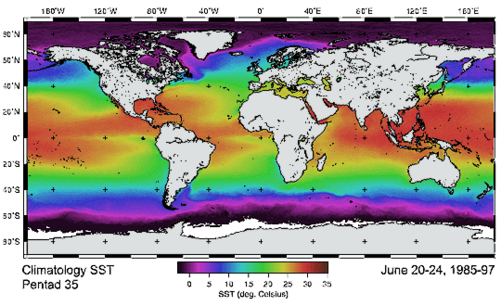This article includes a list of general references, but it lacks sufficient corresponding inline citations. (May 2020) |

The Advanced Very-High-Resolution Radiometer (AVHRR) instrument is a space-borne sensor that measures the reflectance of the Earth in five spectral bands that are relatively wide by today's standards. AVHRR instruments are or have been carried by the National Oceanic and Atmospheric Administration (NOAA) family of polar orbiting platforms (POES) and European MetOp satellites. The instrument scans several channels; two are centered on the red (0.6 micrometres) and near-infrared (0.9 micrometres) regions, a third one is located around 3.5 micrometres, and another two the thermal radiation emitted by the planet, around 11 and 12 micrometres.[1]
The first AVHRR instrument was a four-channel radiometer. The last version, AVHRR/3, first carried on NOAA-15 launched in May 1998, acquires data in six channels. The AVHRR has been succeeded by the Visible Infrared Imaging Radiometer Suite, carried on the Joint Polar Satellite System spacecraft.
- ^ Baum, Bryan A.; Wielicki, Bruce A. (1992). On the Retrieval and Analysis of Multilevel Clouds. 11th International Conference on Clouds and Precipitation. NASA Technical Reports Server. p. 12. hdl:2060/19980008781.